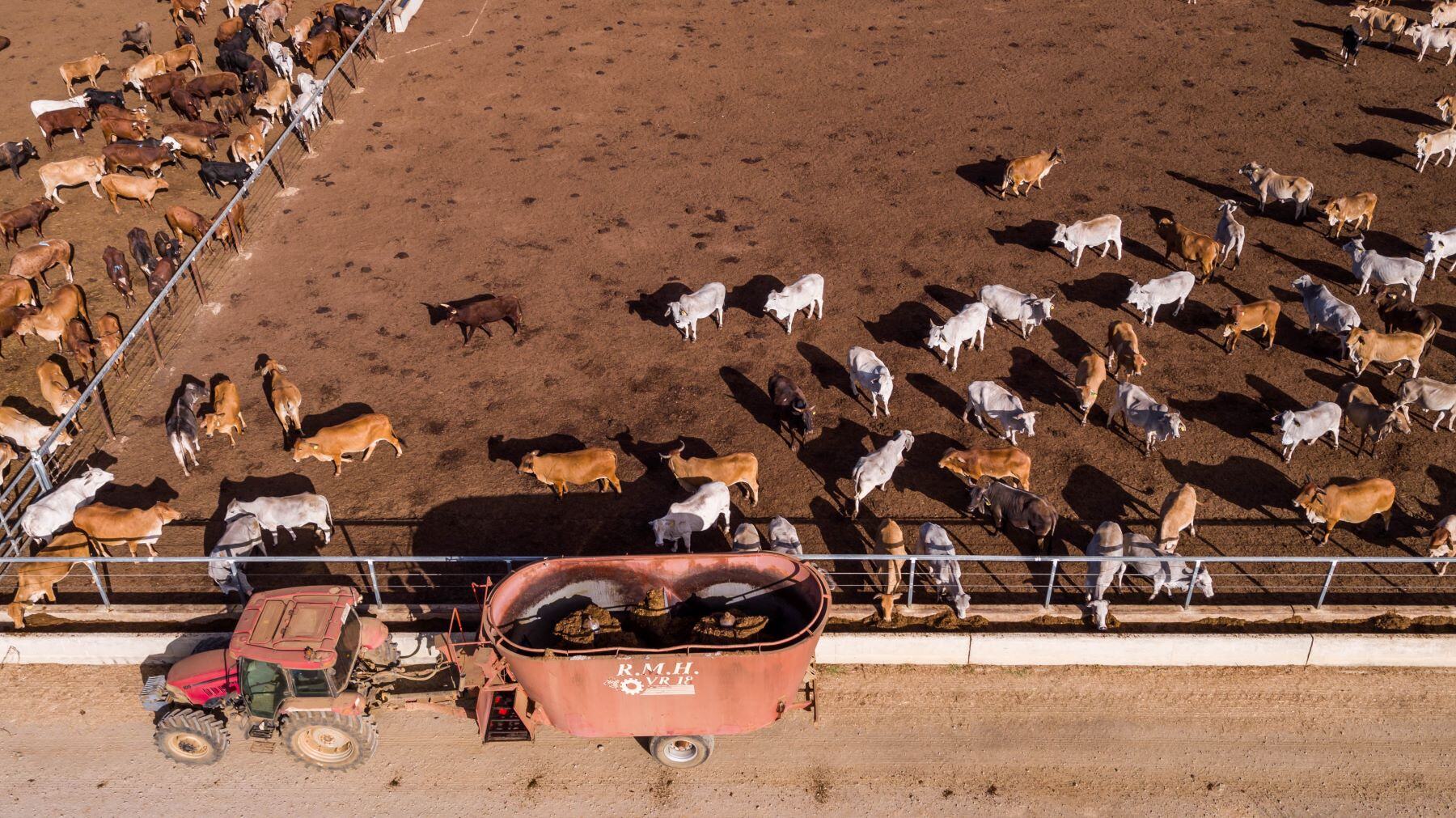The Australian Beef Market in 2025: An Absolute Cracker
In this column in July, the StoneX H2 2025 Australian Cattle & Beef Market Outlook’s bold calls were analysed and assessed for what the final 6...

Numbers of cattle on feed in Australia has exceeded 1.4 million head.
Feedlot capacity has surpassed 1.6 million head for the first time in history.
Increased confidence in feedlot production system and positive trading position underpinning growth.
The Australian lot feeding sector continues to go from strength-to-strength with numbers of cattle on feed exceeding 1.4 million head and capacity breaking 1.6 million head for the first time, according to the June 2024 quarterly feedlot survey published by the Australian Lot Feeders’ Association (ALFA) and Meat & Livestock Australia (MLA).
ALFA President, Barb Madden said that confidence in the feedlot production system and continued positive trading conditions coupled with increased feedlot capacity are behind the latest figures.
“Feedlot capacity is an enabler of growth in the number of cattle Australia can have on feed. National capacity increased in the June quarter as more than 43,000 additional available cattle placements came online under the National Feedlot Accreditation Scheme," Mrs Madden said.
“This indicates that the Australian feedlot sector’s capacity has grown by 5% year-on-year and is the first-time capacity has exceeded 1.6 million head,” said Mrs Madden.
“Favourable trading conditions during the June quarter gave feedlot operators confidence to fill pen space, with the number of additional cattle on feed increasing by over 63,000 to break 1.4 million head for the first time.
“Even with increases in capacity across major lot feeding states, the lift in cattle on feed resulted in feedlot utilisation hitting 87%, which is the second highest level on record.
“The record numbers experienced in the June quarter tells us that confidence in Australia’s grain fed beef production system remains high, and our feedlot sector continues to go from strength-to-strength."
Erin Lukey, MLA’s Senior Market Information Analyst, said that feeder steer prices remaining low on long-term averages and elevated demand for grain fed beef on the global market had provided a stable base for lot feeders.
“Throughput of steers through MLA’s National Feeder Steer Indicator lifted again in the June quarter and remains 22% above the same quarter last year. At the same time, prices have eased 2% to a national average of 323¢/kg lwt. Queensland, as Australia’s largest lot feeding state, was the biggest driver of this, with supply up 23% on the previous quarter, and prices easing by 8%,” said Ms Lukey.
Australian processors and exporters have been exporting record volumes of grain fed beef over the past 12 months, supported by global demand. June quarter export statistics show Australia exported our largest volume of grain fed beef on record, tipping 90,500 tonnes: 15% above our five-year averages.
“Japan, China and Korea remain strong as Australia’s leading grain fed export market destinations. While supply through to China eased 8%, this was coming off strong previous quarters,” Ms Lukey said.
“The increase in demand for grain fed beef from the United States cannot be ignored. Exports to the US lifted 25% on last quarter to 2,900 tonnes, sitting at nearly double the long-term average. The US have been in a destocking phase for five years and will remain in an extended recovery period.
“Access into the US and competing markets such as Japan and Korea will continue to support our grain fed industry over the coming quarters, as the US supply remains contracted."
.jpg)
In this column in July, the StoneX H2 2025 Australian Cattle & Beef Market Outlook’s bold calls were analysed and assessed for what the final 6...
.png)
Each December we save the last article of the year for a bit of a crystal ball gaze, as we try to bring together market fundamentals and work out...
.png)
Australia’s wool market posted another strong performance this week, with all micron categories attracting solid support across the three selling...